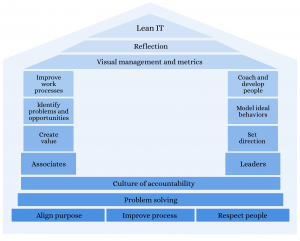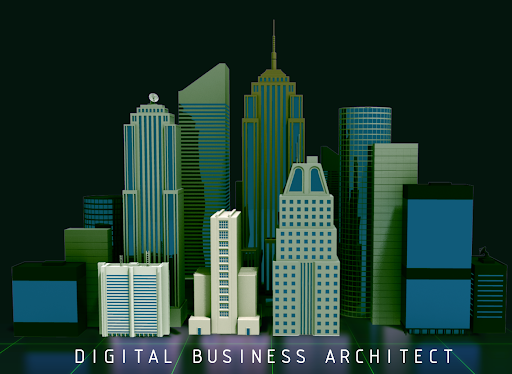Lean approach: also in Tech fields

Transformation framework: from an inefficient and wasteful system to Lean IT implementation.
What does the transformation framework consist on?
In the transformation framework into lean IT there are two main dimensions: the technical, easier to achieve by implementing new tools and methods adapted to IT and the social part that can be divided into multiple smaller parts creating a system similar to a “house” Figure 2.

What are the levels of the house? The foundation, the pillars and the roof.
The foundation is divided into different blocks. The first one is align purpose, the mission of an organization must be clearly stated and understood by everyone working towards it. The second one is improve process, it is necessary to review processes to understand, evaluate and improve them so that they do not become repetitive and non-value adding. The third one is respect people as many companies state respect as a key value inside their firms however in reality, it does not exist. Problem solving is related to implementing a method so that when a problem first appears, it is detected and action is taken immediately and culture of accountability is achieved by creating a good culture of respect, trust and shared-problem solving.
The first pillar of the house is associates whose behaviours are: to create value for customers, to identify problems and opportunities and to improve work processes. The second pillar is leadership whose purpose is to cultivate alignment and its behaviours are: to set direction stating future objectives, to model ideal behaviour prioritizing certain values and to coach people to develop and improve their skills.
The roof of the house contains the three last components. Visual management tries to achieve transparency and alignment within the organization as the key to a visual management system is communication. Metrics refers to the importance of measuring results to know how the organization is doing. And lastly, the top level is reflection, evaluating the own performance, progress and improvement.
What is the role of Business intelligence in this transformation?
In the transformation framework of Lean IT, technology plays and essential role. Lean Business intelligence (BI) helps in the transformation process and in the preservation of the system as BI provides useful information to be considered in lean decision-making processes and improvements.
Some of the IT tools to analyze and manage data are Operational dashboards which monitor operational processes to notify different conditions or problems. Tactical dashboards and Scoreboards are other tools which provide a view of the different projects and activities to managers and supervisors alerting them by mobile devices. Strategic scorecards are another example which help tracking progress using Key Performance Indicators (KPIs) and compare it with the objectives.
How can a company implement and certify having Lean IT?
In order to implement Lean IT processes, culture and systems, formation in the area is required. There are many certificates that validate a formation in Lean IT however the main ones are the ones provided by the Lean IT Association. The association provides four certifications levels: Lean IT Foundation, Lean IT Kaizen, Lean IT leadership and Lean IT Coach. Each certificate has a different purpose and is addressed to different people but they complement each other.

Business Intelligence, Continuous Improvement, Customer value, KPIs, Lean, Lean It, Lean Software Development, Strategic alignment, Sustainability
